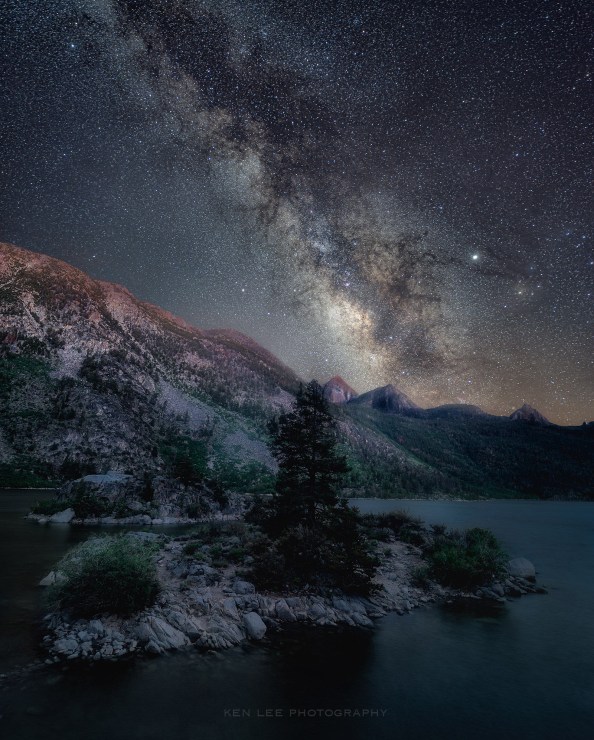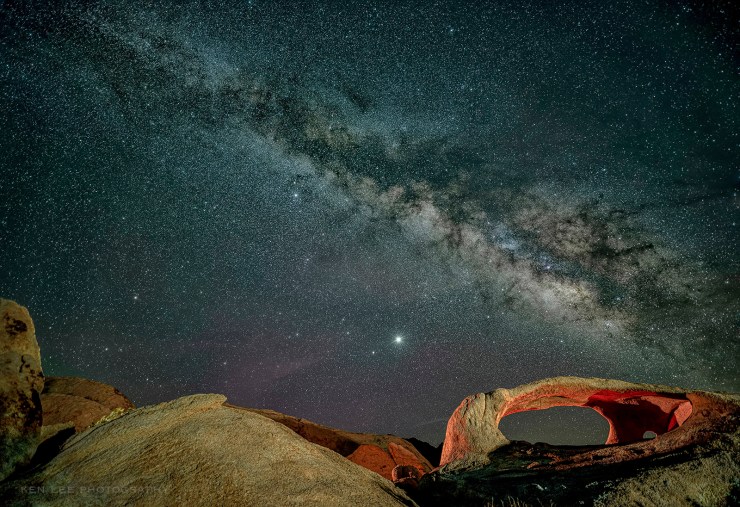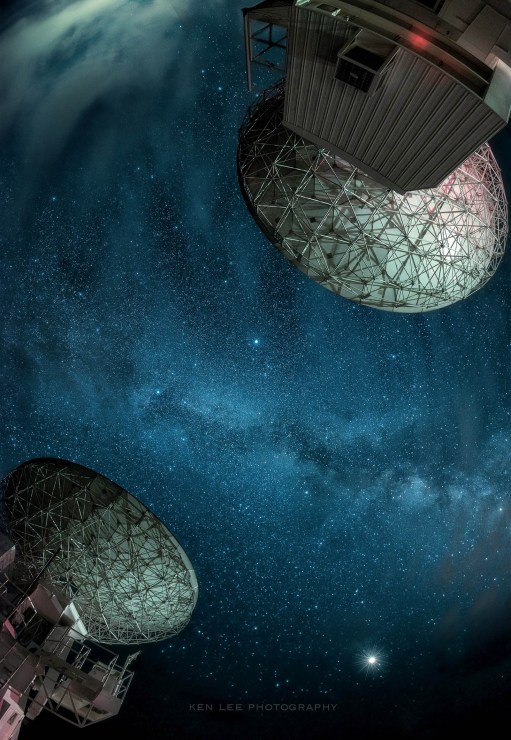Getting sharp, pinpoint stars for a starry sky or the Milky Way may be the hardest part of night photography. However, I’ll try and make our discussion of how to focus methodical and easy. And I’ll discuss seven ways to focus on infinity to get sharp stars or fireworks.

1. Focusing on a distant object during the day
The easiest way to do this is to go out some time when there’s some daylight and focus on something extremely far away.
Choose the mountains or the clouds. It may be right at the lens’ infinity marking. Or slightly to the right. Or slightly to the left. Regardless, mark that setting if you can with a grease pen.
Or better yet, tape the focus ring down with gaffer’s tape so it will not budge. Now you’re ready for the night.
2. Focusing on a distant object at night
Some people will have a friend stand at least 50 feet away and hold up a light. Then they will adjust their focus manually until the light looks like a pinpoint.
If you don’t have a friend nearby, lean a flashlight against a tree or rock. This is far enough away that your lens should perceive this as infinity. This method also works well.

3. Focusing on the moon
Photographing while the moon is out? You’ll get less stars, but on the other hand, the moon may beautifully illuminate the foreground.
Aim your camera so the moon appears in the center. Use autofocus. The moon should be plenty bright enough for your autofocus to work.
If not, go ahead and switch to manual focus and then focus on the moon. You may do this via Live View or looking through the viewfinder.
4. Focusing using your screen to zoom in on stars
Set your focus to where you believe infinity is based on the markings on your lens. Take your best guess. Take a photo. Zoom in a star using your screen. Then make micro-adjustments to your focus accordingly. This should be done if your camera is not mirrorless and you don’t have Live View or it is too grainy or dark. This may take a while, and is easier with some cameras than others.
Be patient — you want the stars to be as sharp as possible. This method can be more accurate than the first two methods, but takes more patience.

5. Adjusting using Live View
This is similar to the above method, but is generally easier to see than zooming in with an LED. Zoom in to a star using Live View, and adjust the focus of your lens manually until it looks very sharp.
This should go rather quickly, and is considerably faster and easier than using your LED. If this option is available to you, I would recommend doing this first. It is easy and arguably the most accurate of the ones listed.
6. Lens filters that help you focus
These are filters that use diffraction methods to nail focus. if you want to know more, search Bahtinov filters, SharpStar2, Focus On Stars, or similar variations on this theme.
7. Using a lens with true infinity
Some manual lens have a hard stop for infinity. For many of these lens, this may actually represent their true infinity. You won’t know until you test. Other lenses, such as the Irix 15mm f/2.4, have a detent for true infinity. This make adjusting for infinity incredibly simple and easy.
Tell your story with the second annual Visual Storytelling Conference!
Experience four days of interactive, online training sessions featuring a range of educational content with experienced photographers and content creators. This free event kicks off with a series of technical boot camps to build essential skills, followed by live, online sessions on photography, video, business and social media. Join live from March 10-13, 2022!
